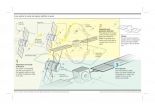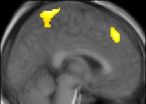(Press-News.org) WHAT: Two studies appearing in the October 14, 2010 New England Journal of Medicine and funded by the National Institutes of Health helped influence the World Health Organization (WHO) to change its guidelines this year for the treatment of HIV infection in certain women and children. The recently updated guidelines affect HIV-infected women who receive a single dose of the antiretroviral drug nevirapine to prevent HIV transmission to their babies, and infants who receive a single dose of nevirapine to prevent acquiring the virus from their HIV-infected mothers but nevertheless become infected. The studies demonstrated that in both cases, the single dose of nevirapine used to prevent mother-to-child transmission of HIV can hamper the drug's effectiveness if it is also used later as part of a regimen to treat these same individuals.
An interim review of the first study, known as OCTANE or ACTG 5208, found that exposing HIV-infected women to a single dose of nevirapine to prevent mother-to-child HIV transmission without subsequently administering a short course of other antiretroviral drugs may lead these women to develop nevirapine-resistant HIV. The development of drug resistance compromises the effectiveness of HIV treatment regimens that include nevirapine as well as other drugs in the same class (known as non-nucleoside reverse transcriptase inhibitors, or NNRTIs). However, the negative effect of exposure to single-dose nevirapine appears to decrease over time.
The 2010 WHO guidelines now advise that HIV-infected women who take single-dose nevirapine to prevent mother-to-child transmission should not be treated for their own infection with a drug regimen that includes an NNRTI if treatment begins fewer than 12 months later and if the women were not given other antiretroviral drugs to prevent the development of nevirapine-resistant HIV.
An interim review of the second study, known as P1060, found that HIV-infected infants who received single-dose nevirapine but nevertheless acquired HIV from their infected mothers control the virus better if their HIV treatment regimen includes the antiretroviral drug ritonavir-boosted lopinavir rather than the more commonly used nevirapine. (Lopinavir is in a different class of drugs than nevirapine.)
The 2010 WHO guidelines now strongly advise that HIV-infected infants who received single-dose nevirapine in an attempt to prevent mother-to-child transmission of the virus be treated with ritonavir-boosted lopinavir plus two other antiretroviral drugs. Previously, WHO had recommended treatment with nevirapine plus two other antiretroviral drugs.
INFORMATION:
The National Institute of Allergy and Infectious Diseases (NIAID), part of NIH, announced the interim findings from the first study in 2008 (http://www.niaid.nih.gov/news/newsreleases/2008/pages/actg_5208.aspx) and from the second study in 2009 (http://www.niaid.nih.gov/news/newsreleases/2009/Pages/P1060.aspx).
The Adult AIDS Clinical Trials Group is conducting OCTANE/ACTG 5208 with funding from NIAID. The International Maternal Pediatric Adolescent AIDS Clinical Trials Group is conducting P1060 with funding from NIAID and the NIH Eunice Kennedy Shriver National Institute of Child Health and Human Development. OCTANE/ACTG 5208 is expected to conclude in 2011; the component of P1060 with nevirapine-exposed infants is expected to conclude this month.
ARTICLES:
S Lockman et al. Antiretroviral therapies in women after single-dose nevirapine exposure. New England Journal of Medicine DOI: 10.1056/NEJMoa09-06626 (2010).
P Palumbo et al. Antiretroviral treatment for children with peripartum nevirapine exposure. New England Journal of Medicine DOI: 10.1056/NEJMoa10-00931 (2010).
WHO. Antiretroviral therapy for HIV infection in adults and adolescents: recommendations for a public health approach—2010 revision (2010). Available at http://www.who.int/hiv/pub/arv/adult2010/en/index.html.
WHO. Antiretroviral therapy of HIV infection in infants and children: towards universal access: recommendations for a public health approach—2010 revision (2010). Available at http://www.who.int/hiv/pub/paediatric/infants2010/en/index.html.
WHO:
Ed Handelsman, M.D., and Beverly Alston-Smith, M.D., of NIAID and Lynne Mofenson, M.D., of NICHD are available to comment.
CONTACT:
To schedule interviews with Drs. Handelsman and Alston-Smith, please contact Laura Sivitz Leifman, 301-402-1663, niaidnews@niaid.nih.gov. To schedule interviews with Dr. Mofenson, please contact Robert Bock or Marianne Glass-Miller at 301-496-5133, bockr@mail.nih.gov.
NIAID conducts and supports research—at NIH, throughout the United States, and worldwide—to study the causes of infectious and immune-mediated diseases, and to develop better means of preventing, diagnosing and treating these illnesses. News releases, fact sheets and other NIAID-related materials are available on the NIAID Web site at http://www.niaid.nih.gov.
The NICHD sponsors research on development, before and after birth; maternal, child, and family health; reproductive biology and population issues; and medical rehabilitation. For more information, visit the Institute's Web site at http://www.nichd.nih.gov/.
The National Institutes of Health (NIH)—The Nation's Medical Research Agency—includes 27 Institutes and Centers and is a component of the U. S. Department of Health and Human Services. It is the primary federal agency for conducting and supporting basic, clinical and translational medical research, and it investigates the causes, treatments and cures for both common and rare diseases. For more information about NIH and its programs, visit http://www.nih.gov.
NIH studies influence revision of WHO guidelines for treating HIV-infected women, infants
2010-10-14
ELSE PRESS RELEASES FROM THIS DATE:
New survey of psychiatric nurses highlights their role in patient care, professional challenges and desire to do more
2010-10-14
Titusville, NJ, October 13, 2010 – According to a new survey sponsored by Janssen®, Division of Ortho-McNeil-Janssen Pharmaceuticals, Inc, 94 percent of psychiatric nurses feel very or extremely involved in providing care for people with mental illness. Although some psychiatric nurses believe that their specialty is as difficult as or more difficult than oncology nursing, or emergency nursing, one-third would prefer to be more involved in patient care than they are now. The survey also revealed that psychiatric nurses believe their work affects patient care, with more ...
Personality and exercise levels may be linked
2010-10-14
There may be a fundamental link between aspects of an individual's personality and their capacity to exercise or generate energy, recent research suggests.
Humans are not the only animals that choose to exercise and – as with people - individuals within the same species differ in their levels of activity, says Dr Peter Biro, a senior lecturer in the UNSW Evolution and Ecology Research Centre, in a review article in the journal Trends in Ecology and Evolution, with colleague Judy Stamps of the University of California, Davis. Dr Biro is an Australian Research Council Future ...
A crucial link in immune development and regulation unearthed
2010-10-14
An Australian team of scientists has uncovered a quality control mechanism that must take place for our immune system to subsequently effectively destroy harmful viruses and bacteria.
The findings were published today in the prestigious international journal Nature.
The team solved a 15-year puzzle by working out the structure and function of a protein called pre T alpha that is essential in guiding the correct expression of various receptors expressed by T lymphocytes, white blood cells of the immune system.
These receptors, known as T cell receptors, recognise ...
Unlike us, honeybees naturally make 'quick switch' in their biological clocks, says Hebrew University researcher
2010-10-14
Jerusalem, Oct. 13, 2010 – Unlike humans, honey bees, when thrown into highly time-altered new societal roles, are able to alter their biological rhythms with alacrity, enabling them to make a successful "quick switch" in their daily routines, according to research carried out at the Hebrew University of Jerusalem.
With people, on the other hand, disturbances to their biological clocks by drastic changes in their daily schedules are known to cause problems -- for example for shift workers and for new parents of crying, fitful babies. Disturbance of the biological clock ...
Eyetracker warns against momentary driver drowsiness
2010-10-14
Those who do a lot of driving know how tiring long car trips and night driving can be. And a simple fraction of a second can decide the difference between life and death. According to the German Road Safety Council e.V. (DVR), one in four highway traffic fatalities is the result of momentary driver drowsiness. Researchers at the Fraunhofer Institute for Digital Media Technology IDMT in Ilmenau, Germany, have developed an assistant system that tracks a driver's eye movements and issues a warning before the driver has an opportunity to nod off to sleep.
The special feature ...
A new system for locating and capturing satellites in space
2010-10-14
Within the framework of this research project, "Acoplamiento y Agarre de Satélites mediante Sistemas Robóticos basado en Visión (Docking and Capture of Satellites through computer vision) (ASIROV)", the scientists have developed algorithms and strategies to dock and capture a disabled satellite through the use of a space vehicle, called a "chaser", which autonomously carries out this function. "In this way", explained the head of this research study, Mohamed Abderrahim, who is from the UC3M Department of Automated Systems Engineering, "we attempt to carry out all ...
Scientists prepare for confined field trials of life-saving drought-tolerant transgenic maize
2010-10-14
DES MOINES, IOWA (14 October 2010)—Crop specialists in Kenya and Uganda have laid the groundwork for confined field trials to commence later this year for new varieties of maize genetically modified to survive recurrent droughts that threaten over 300 million Africans for whom maize is life, according to a speech given today by the head of the African Agricultural Technology Foundation (AATF) at the World Food Prize Symposium.
Scientists working with AATF believe it's important to explore the potential of biotechnology to maintain and increase food production in Africa, ...
I win, you lose: Brain imaging reveals how we learn from our competitors
2010-10-14
Learning from competitors is a critically important form of learning for animals and humans. A new study has used brain imaging to reveal how people and animals learn from failure and success.
The team from Bristol University led by Dr Paul Howard-Jones, Senior Lecturer in Education in the Graduate School of Education and Dr Rafal Bogacz, Senior Lecturer in the Department of Computer Science, scanned the brains of players as they battled against an artificial opponent in a computer game.
In the game, each player took turns with the computer to select one of four ...
Life expectancy higher in Israel than in US, according to Ben-Gurion U. researcher
2010-10-14
BEER-SHEVA, ISRAEL, October 13, 2010 — A new study conducted by a researcher at Ben-Gurion University of the Negev (BGU) for Jerusalem's Taub Center for Social Policy Studies in Israel reports that Israeli's have a higher life expectancy on average than Americans and residents of other OECD (Organization for Economic Cooperation and Development) countries.
According to the most recent data, from 2005, the average American life expectancy is now 78 years; for Israeli Jews, approximately 81 years and Israeli Arabs, 79 years. Japan has the highest life expectancy of OECD ...
Train a computer to classify pictures and videos based on the elements that they contain
2010-10-14
University of Granada researchers have developed a new computer technique that allows to "train" computers to interpret the visual contents of a video or picture. This advance will allow to classify automatically pictures basing on whether individuals or specific objects are present in such images. Videos can also be classified according to specific poses.
At present, computer search and classification of images is made basing on the name of the file, folder or on features as date or size, but the visual information contained was never used for classification purposes. ...


